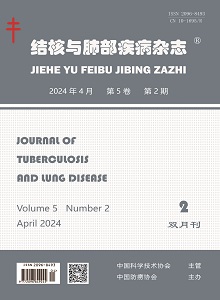Objective: To explore the CT features of multidrug-resistant tuberculosis (MDR-TB) and extensively drug-resistant tuberculosis (XDR-TB) patients with different Traditional Chinese Medicine (TCM) syndrome, to provide basis for TCM syndrome differentiation of tuberculosis patients. Methods: Thirty-seven MDR-TB patients and 23 XDR-TB cases diagnosed by Guangzhou Chest Hospital from July 2019 to December 2020 were studied with TCM Syndrome classification and CT examination. Correlation of TCM syndromes and chest CT image features was analyzed. Results: Among those 60 patients, 28 cases (46.67%) had Hyperactivity of Fire and Yin Deficiency (HFYD) syndrome, 24 cases (40.00%) had Deficiency of Qi and Yin (DQY) syndrome, 6 cases (10.00%) had Deficiency of Yin and Yang (DYY) syndrome, 2 cases (3.33%) had Pulmonary Yin Deficiency (PYD) syndrome. There were 2 cases (3.34%) with single lung lobe lesion, 8 cases (13.33%) with lesions in 2, 3 and 4 lung lobes for each, and 34 cases (56.67%) with lesions in all lung lobes. For patients with HFYD syndrome, there were 8 cases with single lobe lesion and 2 lobes, 9 cases with lesions in 3 lobes and 4 lobes, and 11 with lesions in all lung lobes; For patients with PYD syndrome, there were 2 cases with lesions in all lung lobes. There was significant differences in the distribution of lung lobes between those two TCM syndrome groups (χ2=10.100,P=0.031). Thirty-six cases (60.00%) had pulmonary cavities, among whom 1 case (2.78%) showed PYD, 15 cases (41.67%) showed HEYD, 14 cases (38.89%) showed DQY, and 6 cases (16.66%) showed DYY. For patients with HFYD syndrome, there were 4 cases having thick wall cavities, 3 cases having wormlike cavities, 3 cases having thin wall and wormlike cavities, 2 cases having thick wall, thin wall and wormlike cavities, 2 cases having thin wall cavities, 1 case having thick wall and wormlike cavities; One case with PYD syndrome had thick wall and thin wall cavities. There was significant differences in the shape of cavity between those two TCM Syndrome groups (χ2=11.929,P=0.026). For patients with HFYD syndrome, there were 19 cases having patch shadows, 17 cases having small nodule shadows, 15 cases having big nodule shadows, 15 cases having striate shadows, 14 cases having spot shadows, 8 cases having flaky shadows, 4 cases having block shadows and 3 cases having tree-bud sign. For patients with PYD syndrome, there were 2 cases having small nodule shadows, 2 cases having striate shadows, 1 case having patch shadows and 1 case having large nodule shadows, there was significant difference in pulmonary lesion morphology between those two TCM syndrome groups (χ2=15.600,P=0.015). Conclusion: Lesions of MDR-TB and XDR-TB were widely distributed in patient’ lungs and cavities were quite common. The TCM syndromes of HEYD and DQY were major TCM manifestations.There were significant differences in lung lesion distribution, morphology, cavity between the PYD syndrome and HFYD syndrome groups which could provide certain guidance for TCM clinical practice.

 Wechat
Wechat